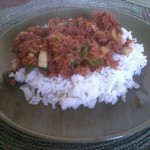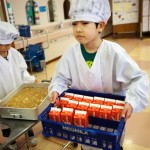When enrolling in the class English 101 for the spring semester, I had a good idea of what to expect. I spoke with my English 090 professor and decided to enroll with her as my teacher for English 101. I was a bit nervous when starting the class, as it is a college level course, but I took what I learned from the previous semester and applied it to my work when writing for this class. I knew that we would have to do a couple research essays, which isn’t my favorite to do because I have a weakness with properly making work-cited pages. I used handouts from the writing center which helped immensely and also having help from my professor. This is something that I would like to work on while in college as it will help me in the future with writing future research papers. As you view my portfolio, you will be able to see how I have grown as a writer and hopefully you find my writing enjoyable.
In my opinion, “Eat Your Heart Out”, is my best piece of writing. I was excited to write this memoir because this essay plays such a big role in my daughter and I’s life. As I was writing this memoir, I wanted to engage the reader as much as possible by using specific details describing how Puerto Rican cuisine was made. Although it was hard to describe every single detail of how the dish was made, I feel like I did my best to describe details vividly.
The next writing assignment I chose to include in my portfolio is, “Organic Overload”. This “text wrestling” assignment was to read an article that pertained to a chosen topic in which we selected at the beginning of the semester. The topic I chose was food, and we were asked to give a summery and response to the article selected. I found this mildly difficult because there was so much content to cover in the article, and the author tended to scatter his thoughts. I realized that even the best of writers have difficulties organizing their thoughts and not to get discouraged while writing. This was the first summery/ response I have ever done along with properly using MLA formatting for citations. With a few revisions on my assignment, I was pleased with the outcome.
My most recent assignment I have completed is, “Getting Schooled, on School Lunches”. In this argumentative assignment, I found that this was the most difficult for me to write. With a plethora of information, and differences nationwide on the topic of school lunches, I found it difficult to include so much information in a 1000 word essay. One could possibly write a book pertaining to the information of this topic. We were required to include sources in MLA format, which I had mentioned earlier, is one of my weaknesses. I have no problem writing in my own words, the problem I have is using in text citations and placing them properly after sentences. Although, not my strongest piece of writing, I feel that it was a learning experience and prepped me for what is to come in the future when enrolling in English 102 along with other classes pertaining to my degree.
My semester in English 101, was undoubtingly a learning experience that I will take with me throughout my college experience. I better learned how to organize my thoughts and ideas in a cohesive manner. This helped me produce writing assignments that are more engaging to the reader, while keeping on track with the main idea. I have also gained confidence in my writing because I have been taught how to write with meaning and purpose, and how to compose essays the proper way. English 101 has given me the drive to become a better writer and to prosper as a successful, well-rounded student. There is always room for improvement when it comes to writing, and I think I will excel in English 102 with what I have learned this semester. As you can see, the writing assignments in my portfolio represent my writing competence in showing development, focus, and organization skills. I hope that you enjoy reading my writing assignments as much as I enjoyed writing them.




